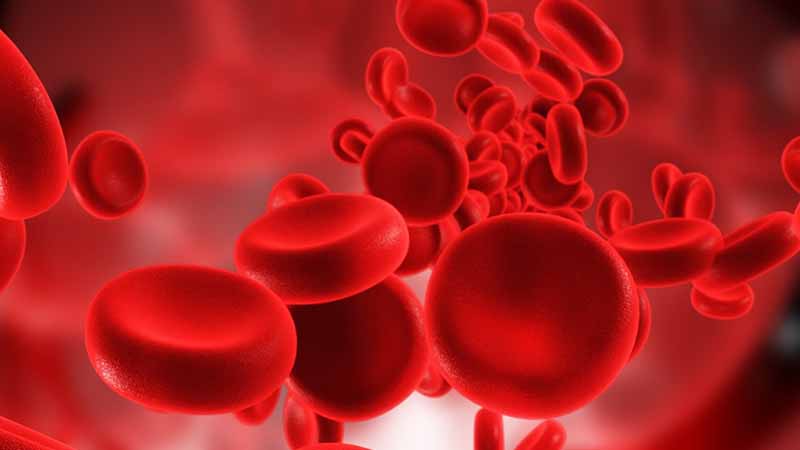How to manage low hemoglobin levels?
- 40 months ago
Low hemoglobin can be quite risky and can lead to anemia if it goes unnoticed. Also, women are the most affected by this condition. So, how to control or manage low hemoglobin level? Well, this is what the blog is all about.
Below we’ll discuss how hemoglobin is related to anemia and how you can manage the same. So, let’s start.
What is anemia and how is it related to Hemoglobin?
Anemia is a condition wherein your body lacks the required number of healthy RBCs. Although there are several types of Anemia, the most common one is IDA. IDA or Iron Deficiency Anemia which is caused due to iron deficiency.
Let’s now understand the connection between hemoglobin and IDA.
Your RBCs contain Hemoglobin which is a protein. And this protein is rich in iron. So, if your body lacks the adequate amount of iron, it won’t be able to produce enough RBCs to transport oxygen rich blood to organs. This way you’ll experience a condition known as Iron deficiency anemia.
So, when your body loses blood or HB, the ability to transport oxygen to the organ decreases which causes IDA. And this is how low HB leads to or is connected with anemia.
What are the symptoms of iron deficiency anemia?
Here are some common symptoms indicating iron deficiency anemia
- Weakness
- Extreme fatigue
- Pale skin
- Fast heartbeat
- Cold feet and hands
- Poor appetite, in children and infants
- Chest pain
- Brittle nails
- Dizziness or Headache
- Inflammation of your tongue
- Cravings as dirt, ice, or starch
If you notice any of the above symptoms, you must contact your doctor and get diagnosed for IDA. Most of the time, symptoms only appear when you have IDA. Fortunately, it’s treatable.

What are the normal hemoglobin levels?
The level of HB is different for both men and women.
- For men normal HB levels lie between: 14.0 and 17.5 (gm/dL)
- For women normal HB levels lie between: 12.3 and 15.3 (gm/dL)
What leads to low hemoglobin levels?
Here are some conditions that might lead to low hemoglobin levels:
1. Blood Loss
- Colon Cancer
- Bleeding during a Surgery
- Traumatic Injury
2. Nutritional Deficiency
- Folate
- Vitamin B12
- Iron
3. Abnormal Hemoglobin
- Sickle Cell Anemia
4. Inherited
- Thalassemia
5. Bone Marrow Issue
- Kidney Failure
- Suppression Caused by chemo drugs
- Bone Marrow Replacement
Book a full body test, including Complete Blood Count Test with ESR (CBC), on The Wellness Corner.
How can you improve Hemoglobin levels and prevent complications such as Anemia?
The most common and significant issue caused by low Hemoglobin is Iron Deficiency Anemia. And low Hemoglobin is caused due to low iron content. So, we’ll discuss the ways using which you can maintain iron levels and thus prevent low HB and anemia.
1. Consume Green Leafy Veggies
Green leafy vegetables are some of the best sources of non heme iron. Here are some leafy greens that you can consume:
- Collard Greens
- Swiss Chard
- Spinach
- Dandelion Greens
- Kale
Sometimes anemia is caused by a lack of folate. Fortunately, Swiss chard along with collard contain folate. So, you can expect full protection from anemia.
2. Poultry and Meat
Poultry and meat are a good source of heme iron. Heme iron is quite good as it is absorbed better by your body. Specifically, you can go for:
- Lamb
- Red Meat
- Venison
You can also go for chicken and poultry but the amount of iron is lower.
Furthermore, if you consume Vitamin C rich fruits along with non-heme iron sources (kale, spinach etc.), your body’s iron absorption will improve.
3. Seafood
Some types of seafood are also a good source of heme iron. For example:
- Crabs
- Scallops
- Shrimps
- Clams
- Oysters
Here are some fish rich in iron:
- Salmon (canned and fresh)
- Pompano
- Tuna
- Fresh Perch
- Mackerel
4. Fortified Foods
Fortified foods are the ones that have added nutrients. if you’re someone who cannot consume meat and other iron sources, you can go for:
- Orange Juice (Fortified)
- Fortified Cereals
- Pasta (Fortified)
- White Rice (Fortified)
5. Iron Supplements
Sometimes consuming iron rich food is quite a hassle. This is when you can rely on tasty iron rich supplements such as Melts Nano Iron. This supplement comes with:
- Iron
- Organic Beetroot
- Organic Swiss Chard
- Organic Spinach
- Folic Acid
- Organic pumpkin Seeds
- Acerola Cherry
Here are the benefits it offers:
- Improves Iron Absorption
- Helps Prevent Anemia
- Enhanced Hemoglobin production
- Boosts RBC Formation
- Enhances Energy Levels
This supplement is clinically tested, tasty, safe and quite effective. So, you can completely rely on it.
Wrapping Up
Low hemoglobin levels can be because of several reasons. However, it majorly leads to one problem and that is anemia (mostly iron deficiency anemia). Fortunately, you can keep up the RBC and Hemoglobin production by consuming iron rich food items. Or else, you can go for the iron supplement listed above.
When your body will have enough iron, the RBC and Hemoglobin production will increase. And in this way, you won’t experience low hemoglobin levels and thus no anemia.








